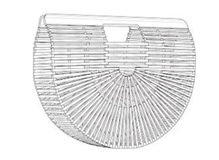The US Court of Appeals for the Federal Circuit vacated a district court’s noninfringement decision that was based on a negative claim construction and remanded with instructions for the district court to determine what affirmative claim construction should be adopted. Sound View Innovations, LLC v. Hulu, LLC, Case No. 21-1998 (Fed. Cir. May 11, 2022) (Prost, Mayer, Taranto, JJ.)
Sound View owns a now-expired patent directed to streaming multimedia information over public networks. Sound View asserted the patent against Hulu based on Hulu’s use of a central content server that’s connected to end users through intermediate edge servers. The asserted claim recites downloading streaming content from a buffer in a helper server to an end user while concurrently retrieving more streaming content from a content server. During claim construction, the district court construed the downloading/retrieving limitation to require using the same buffer, as opposed to two different buffers.
With that claim construction in hand, Hulu sought summary judgment that, in the edge servers of its content delivery networks, no single buffer hosts both the video portion downloaded to the client and the retrieved additional portion. In response, Sound View argued that a factual dispute remained about whether “caches” in the edge servers met the concurrency limitation as construed. The district court held, however, that a “cache” cannot be a “buffer,” and on that basis granted summary judgment of noninfringement. The district court also excluded Sound View’s expert testimony on reasonable royalty damages. Sound View appealed.
The Federal Circuit first reviewed construction of the downloading/retrieving limitation, which was reviewed de novo since the district court relied on only the intrinsic evidence. The Court first analyzed the claim, noting that its wording “reasonably suggests allocating a single buffer” and did not suggest additional buffers. When reviewing the specification, the Court found that it was not inconsistent with reading the claims requiring that the same buffer be used for both downloading and retrieving and observed that it disclosed an embodiment with only one buffer. The Court also reviewed the prosecution history, noting that the applicants added the limitation at issue to distinguish prior art and specifically emphasized the “concurrent[]” limitation. Thus, the Court affirmed the district court’s construction of the downloading/receiving limitation.
Turning to the noninfringement finding, the Federal Circuit rejected the district court’s finding that a “cache” was a different, distinct physical component when compared to a “buffer.” In particular, the Court took issue with this interpretation because it was a negative construction, and the district court never provided an affirmative construction to be used in the infringement analysis. The Court also found that the intrinsic evidence did not support determining that “buffers” and “caches” were mutually exclusive. The Court thus reversed and remanded for the district court to determine an affirmative construction of “buffer.”
The Federal Circuit next addressed the district court’s decision to exclude evidence from Sound View’s expert on reasonable royalty damages. First, the Court determined that the expert could not rely on a study performed in Sydney, Australia [...]
Continue Reading
read more


 Subscribe
Subscribe



